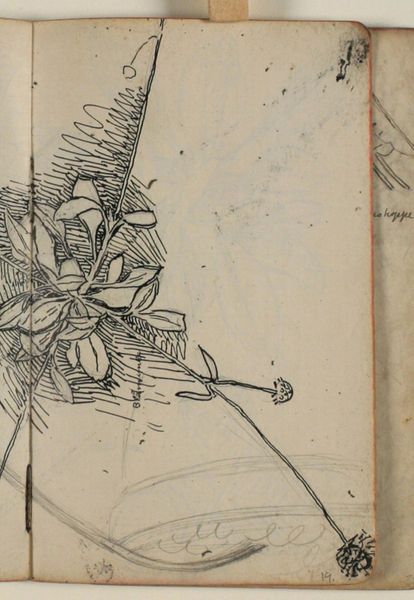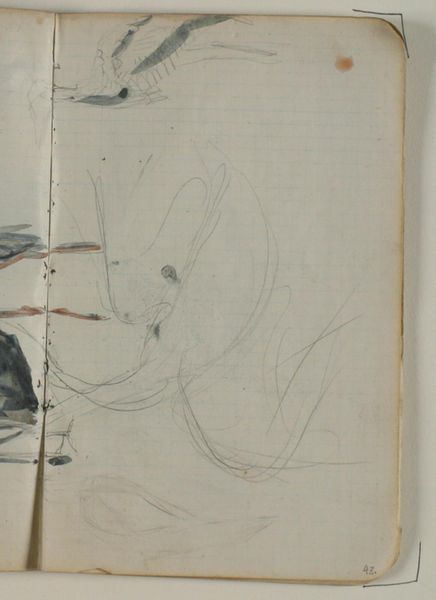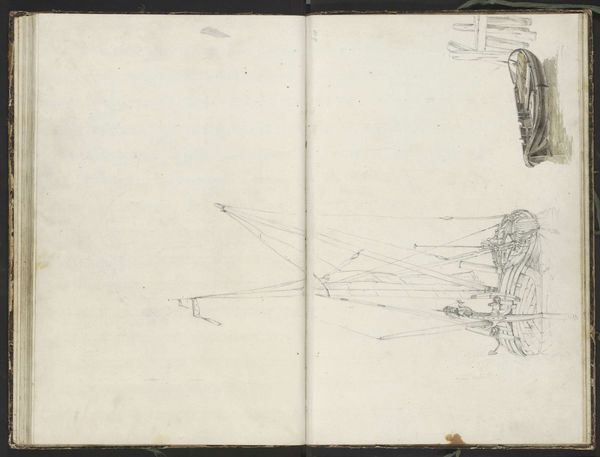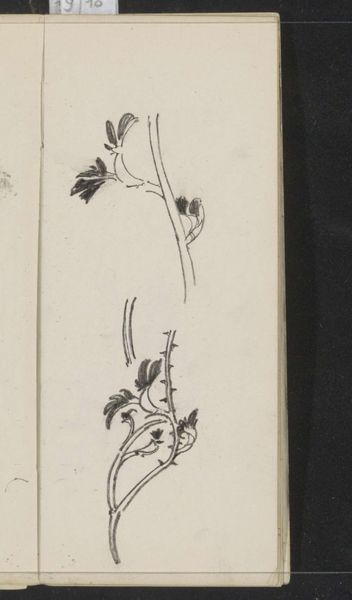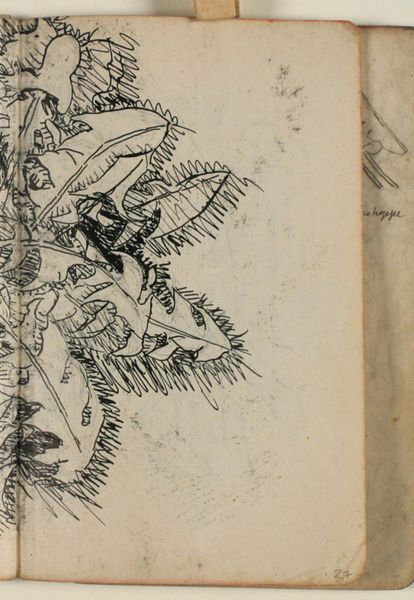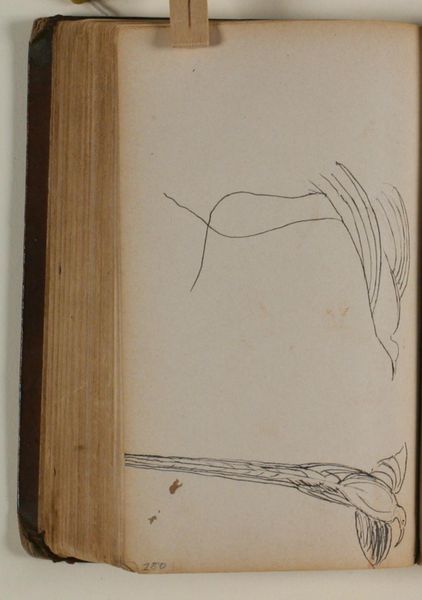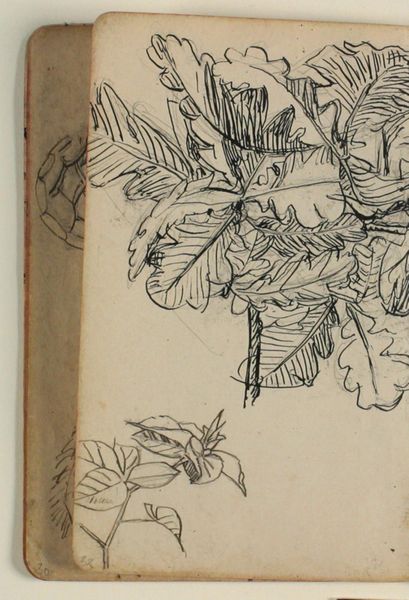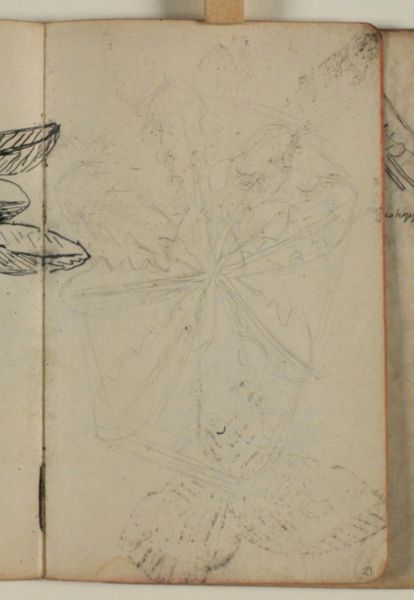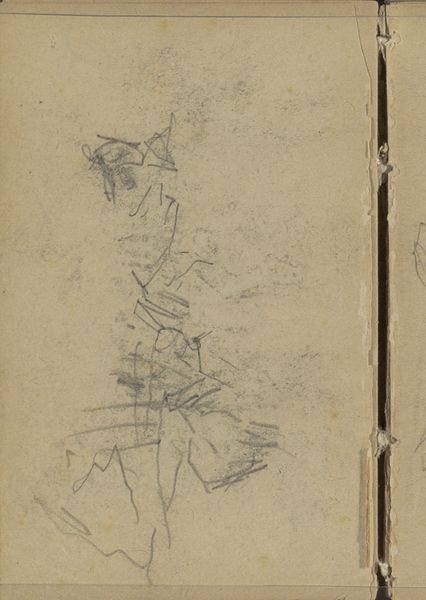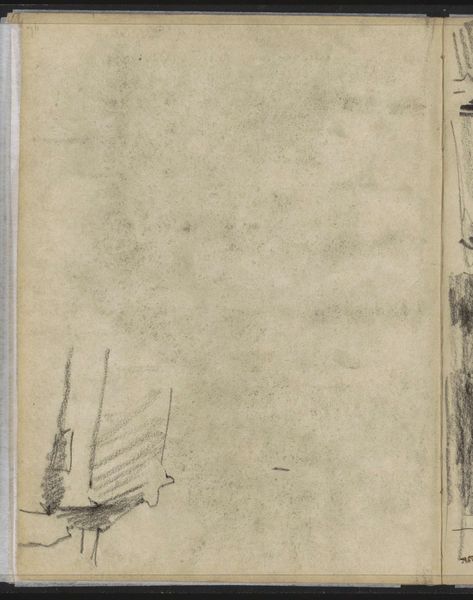
drawing, coloured-pencil, paper
#
drawing
#
organic
#
coloured-pencil
#
paper
#
coloured pencil
#
sketchbook drawing
Dimensions: 161 mm (height) x 96 mm (width) (bladmaal)
Curator: What catches my eye immediately about Niels Larsen Stevns’s "Plantestudie" – roughly, “Plant Study” – from 1906-1910, is its directness. There's a sort of casual beauty in these quick colored pencil strokes on paper. Editor: Casual, maybe, but that sketchbook feeling – the visible page edges and soft hues of the paper – to me speaks more about the daily practice of an artist deeply entwined with their subject matter. The intimacy here is unmistakable. Curator: Yes! These kinds of images root us. Plant forms are foundational. Notice how Stevns captured the inherent, branching symbolism in the plant's structure, and think about trees in world mythologies, genealogical 'trees' - this reaching upwards, this embeddedness. Editor: And look at the materials themselves. This isn't some grand oil painting meant to impress; it’s humble pencil on what appears to be fairly basic paper. The quickness of the medium speaks volumes. I wonder, what was the relative cost and accessibility of these materials at the time? Were these preliminary sketches for something larger? Curator: That may well be the case, but still the quick marks and layered construction remind us that natural forms resonate through time and culture in ways we understand without even thinking. I appreciate that this artist lets us see how our subconscious can take these organic symbols and process them visually. Editor: Right, these are humble gestures, but the means of production and circulation affect how an audience experiences them, right? If these remained unseen in a private sketchbook, how would it change the image’s meaning compared to its current institutional display at the SMK? Curator: Perhaps the institution serves as a symbolic frame now, bestowing value and longevity on the everyday process. I am struck by the delicate rendering, how lightly it touches on ideas about nature and permanence through shape. Editor: Absolutely, and by noticing the modest origins we can consider its accessibility for other artists as well. It becomes less about high art and more about the value in practice, process, and materials that exist for a reason within society. Curator: Thinking about the universality of this sort of observation, what stays with me is how art helps us tap into something innate. We see plants; we understand growth; we are reminded of life cycles that move through us. Editor: And I’m still appreciating the beauty in the quotidian. Its physical manifestation remains tethered to labor, accessibility and consumption. It's a powerful reminder that even the simplest materials can give rise to insightful observation and meaning.
Comments
No comments
Be the first to comment and join the conversation on the ultimate creative platform.
